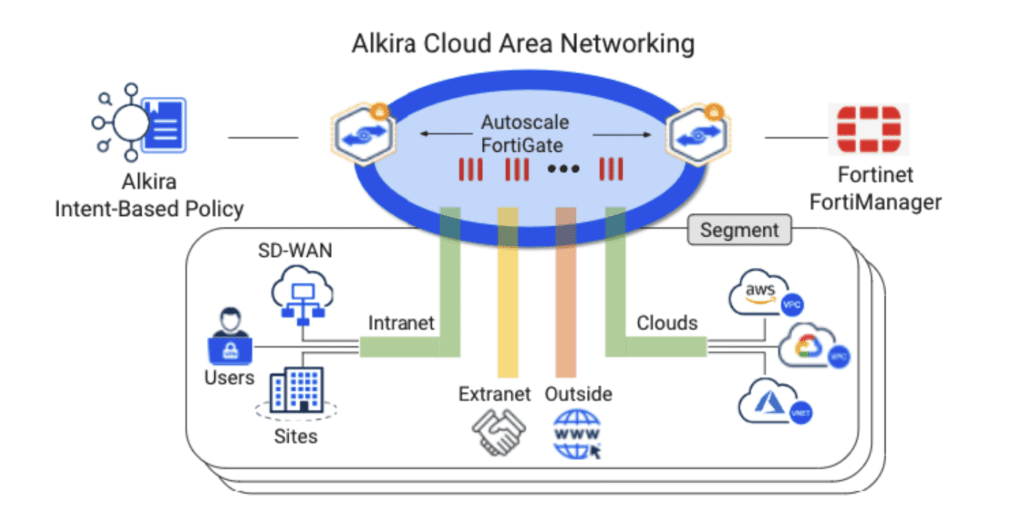The Principle of Least Privilege (PoLP) is a foundational concept in cybersecurity, aimed at minimizing the risk of security breaches. By granting users and applications the minimum levels of access—or permissions—needed to perform their tasks, organizations can significantly reduce their attack surface. In the context of cloud computing, implementing PoLP is critical. This article explores how to enforce PoLP in the three major cloud platforms(cloud security): Amazon Web Services (AWS), Microsoft Azure, and Google Cloud Platform (GCP).
AWS (AMAZON WEB SERVICES)
1. Identity and Access Management (IAM)
AWS IAM is the core service for managing permissions. To implement PoLP:
- Create Fine-Grained Policies: Define granular IAM policies that specify exact actions allowed on specific resources. Use JSON policy documents to customize permissions precisely.
- Use IAM Roles: Instead of assigning permissions directly to users, create roles with specific permissions and assign these roles to users or services. This reduces the risk of over-permissioning.
- Adopt IAM Groups: Group users with similar access requirements together. Assign permissions to groups instead of individual users to simplify management.
- Enable Multi-Factor Authentication (MFA): Require MFA for all users, especially those with elevated privileges, to add an extra layer of security.
2. AWS Organizations and Service Control Policies (SCPs)
- Centralized Management: Use AWS Organizations to manage multiple AWS accounts. Implement SCPs at the organizational unit (OU) level to enforce PoLP across accounts.
- Restrict Root Account Usage: Ensure the root account is used sparingly and secure it with strong MFA.
3. AWS Resource Access Manager (RAM)
- Share Resources Securely: Use RAM to share AWS resources securely across accounts without creating redundant copies, adhering to PoLP.
AZURE (MICROSOFT AZURE)
1. Azure Role-Based Access Control (RBAC)
Azure RBAC enables fine-grained access management:
- Define Custom Roles: Create custom roles tailored to specific job functions, limiting permissions to only what is necessary.
- Use Built-in Roles: Start with built-in roles which already follow PoLP principles for common scenarios, then customize as needed.
- Assign Roles at Appropriate Scope: Assign roles at the narrowest scope possible (management group, subscription, resource group, or resource).
2. Azure Active Directory (Azure AD)
- Conditional Access Policies: Implement conditional access policies to enforce MFA and restrict access based on conditions like user location or device compliance.
- Privileged Identity Management (PIM): Use PIM to manage, control, and monitor access to important resources within Azure AD, providing just-in-time privileged access.
3. Azure Policy
- Policy Definitions: Create and assign policies to enforce organizational standards and PoLP. For example, a policy to restrict VM sizes to specific configurations.
- Initiative Definitions: Group multiple policies into initiatives to ensure comprehensive compliance across resources.
GCP (GOOGLE CLOUD PLATFORM)
1. Identity and Access Management (IAM)
GCP IAM allows for detailed access control:
- Custom Roles: Define custom roles to grant only the necessary permissions.
- Predefined Roles: Use predefined roles which provide granular access and adhere to PoLP.
- Least Privilege Principle in Service Accounts: Create and use service accounts with specific roles instead of using default or highly privileged accounts.
2. Resource Hierarchy
- Organization Policies: Use organization policies to enforce constraints on resources across the organization, such as restricting who can create certain resources.
- Folder and Project Levels: Apply IAM policies at the folder or project level to ensure permissions are inherited appropriately and follow PoLP.
3. Cloud Identity
- Conditional Access: Implement conditional access using Cloud Identity to enforce MFA and restrict access based on user and device attributes.
- Context-Aware Access: Use context-aware access to allow access to apps and resources based on a user’s identity and the context of their request.
IMPLEMENTING PRINCIPLE OF LEAST PRIVILEGE IN AWS, AZURE, AND GCP
As a Cloud Security Analyst, ensuring the Principle of Least Privilege (PoLP) is critical to minimizing security risks. This comprehensive guide will provide detailed steps to implement PoLP in AWS, Azure, and GCP.
AWS
STEP 1: REVIEW IAM POLICIES AND ROLES
- Access the IAM Console:
- Navigate to the AWS IAM Console.
- Review existing policies under the “Policies” section.
- Look for policies with wildcards (
*), which grant broad permissions, and replace them with more specific permissions.
- Audit IAM Roles:
- In the IAM Console, go to “Roles.”
- Check each role’s attached policies. Ensure that each role has the minimum required permissions.
- Remove or update roles that are overly permissive.
STEP 2: USE IAM ACCESS ANALYZER
- Set Up Access Analyzer:
- In the IAM Console, select “Access Analyzer.”
- Create an analyzer and let it run. It will provide findings on resources shared with external entities.
- Review the findings and take action to refine overly broad permissions.
STEP 3: TEST POLICIES WITH IAM POLICY SIMULATOR
- Simulate Policies:
- Go to the IAM Policy Simulator.
- Simulate the policies attached to your users, groups, and roles to understand what permissions they actually grant.
- Adjust policies based on the simulation results to ensure they provide only the necessary permissions.
STEP 4: MONITOR AND AUDIT
- Enable AWS CloudTrail:
- In the AWS Management Console, go to “CloudTrail.”
- Create a new trail to log API calls across your AWS account.
- Enable logging and monitor the CloudTrail logs regularly to detect any unauthorized or suspicious activity.
- Use AWS Config:
- Navigate to the AWS Config Console.
- Set up AWS Config to monitor and evaluate the configurations of your AWS resources.
- Implement AWS Config Rules to check for compliance with your least privilege policies.
STEP 5: UTILIZE AUTOMATED TOOLS
- AWS Trusted Advisor:
- Access Trusted Advisor from the AWS Management Console.
- Review the “Security” section for recommendations on IAM security best practices.
- AWS Security Hub:
- Enable Security Hub from the Security Hub Console.
- Use Security Hub to get a comprehensive view of your security posture, including IAM-related findings.
AZURE
STEP 1: REVIEW AZURE AD ROLES AND PERMISSIONS
- Azure AD Roles:
- Navigate to the Azure Active Directory.
- Under “Roles and administrators,” review each role and its assignments.
- Ensure users are assigned only to roles with necessary permissions.
- Role-Based Access Control (RBAC):
- Go to the “Resource groups” or individual resources in the Azure portal.
- Under “Access control (IAM),” review role assignments.
- Remove or modify roles that provide excessive permissions.
STEP 2: CHECK RESOURCE-LEVEL PERMISSIONS
- Review Resource Policies:
- For each resource (e.g., storage accounts, VMs), review the access policies to ensure they grant only necessary permissions.
- Network Security Groups (NSGs):
- Navigate to “Network security groups” in the Azure portal.
- Review inbound and outbound rules to ensure they allow only necessary traffic.
STEP 3: MONITOR AND AUDIT
- Azure Activity Logs:
- Access the Activity Logs.
- Monitor logs for changes in role assignments and access patterns.
- Azure Security Center:
- Open Azure Security Center.
- Regularly review security recommendations and alerts, especially those related to IAM.
STEP 4: UTILIZE AUTOMATED TOOLS
- Azure Policy:
- Create and assign policies using the Azure Policy portal.
- Enforce policies that require the use of least privilege access.
- Azure Blueprints:
- Use Azure Blueprints to define and deploy resource configurations that comply with organizational standards.
- Privileged Identity Management (PIM):
- In Azure AD, go to “Privileged Identity Management” under “Manage.”
- Enable PIM to manage, control, and monitor privileged access.
GCP
STEP 1: REVIEW IAM POLICIES AND ROLES
- Review IAM Policies:
- Access the IAM & admin console.
- Review each policy and role for overly permissive permissions.
- Avoid using predefined roles with broad permissions; prefer custom roles with specific permissions.
- Create Custom Roles:
- In the IAM console, navigate to “Roles.”
- Create custom roles that provide the minimum necessary permissions for specific job functions.
STEP 2: CHECK RESOURCE-BASED POLICIES
- Service Accounts:
- In the IAM & admin console, go to “Service accounts.”
- Review the permissions granted to each service account and ensure they are scoped to the least privilege.
- VPC Firewall Rules:
- Navigate to the VPC network section and select “Firewall rules.”
- Review and restrict firewall rules to allow only essential traffic.
STEP 3: MONITOR AND AUDIT
- Cloud Audit Logs:
- Enable and configure Cloud Audit Logs for all services.
- Regularly review logs to monitor access and detect unusual activities.
- IAM Recommender:
- In the IAM console, use the IAM Recommender to get suggestions for refining IAM policies based on actual usage patterns.
- Access Transparency:
- Enable Access Transparency to get logs of Google Cloud administrator accesses.
STEP 4: UTILIZE AUTOMATED TOOLS
- Security Command Center:
- Access the Security Command Center for a centralized view of your security posture.
- Use it to monitor and manage security findings and recommendations.
- Forseti Security:
- Deploy Forseti Security for continuous monitoring and auditing of your GCP environment.
- Policy Intelligence:
- Use tools like Policy Troubleshooter to debug access issues and Policy Analyzer to compare policies.
STEP 5: CONDUCT REGULAR REVIEWS
- Schedule Periodic Reviews:
- Regularly review IAM roles, policies, and access patterns across your GCP projects.
- Use the Resource Manager to organize resources and apply IAM policies efficiently.
By following these detailed steps, you can ensure that the Principle of Least Privilege is effectively implemented across AWS, Azure, and GCP, thus maintaining a secure and compliant cloud environment.
Implementing the Principle of Least Privilege in AWS, Azure, and GCP requires a strategic approach to access management. By leveraging the built-in tools and services provided by these cloud platforms, organizations can enhance their security posture, minimize risks, and ensure compliance with security policies. Regular reviews, continuous monitoring, and automation are key to maintaining an effective PoLP strategy in the dynamic cloud environment.

Securing DevOps: Security in the Cloud
InfoSec services | InfoSec books | Follow our blog | DISC llc is listed on The vCISO Directory | ISO 27k Chat bot





























